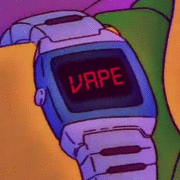|
Grand Fromage posted:Is there a good guide to doing repair on lenses? I know the main advice would be "don't" but I got an old manual lens for with the aperture stuck open for $4 just to play with.
|
|
|
|

|
| # ? Apr 20, 2024 10:05 |
|
torgeaux posted:https://forums.somethingawful.com/showthread.php?threadid=3868955&pagenumber=5&perpage=40 Derp. Thanks. Megabound posted:What lens? Lenses are the best starting point for learning repair. A Zesnar 135mm F2.8. Other than the stuck aperture it looks to be in good condition.
|
|
|
|
So after recommendations here and on reddit I bought a used Sony A6400. Well actually I bought a used NEX 5N with several lenses that someone asked way too little for, realized it wasn't nearly enough for what I wanted to do, and bought an A6400 the next weekend. Anyway, my question is about branding on Sony lenses. I get that a smaller sensor means a cropped image and a smaller field of view. This makes sense putting a full frame lens on an APSC camera. When a Sony lens is branded as, say a 50mm APSC lens is that crop taken into account, or is it really a 75mm lens? Are a 50mm E and FE lens going to have the same field of view on an APSC camera?
|
|
|
|
I'm pretty sure all lenses are listed by their full frame focal length just for consistency's sake. I know Fuji lenses have full frame focal lengths on them even though Fuji doesn't even make any full frame cameras.
|
|
|
|
That makes sense, I just wanted to be sure.
|
|
|
|
If I understand lenses properly there's no such thing as "full frame focal length" either. A lens just has a focal length and (edit - when focused to infinity) this measures the distance from the center of the lens to a point where the image circle is in focus (and if you like sharp images you want your sensor at this distance). The sensor/film size does nothing but set the angle of view of the resulting image because it's recording a rectangle out of that circle. If photographers were able to describe anything without relying on a pyramid of vernacular that took 200 years to build, instead of doing "35mm equivalent" or "crop factors" we'd talk about numbers people can actually understand like "field of view." The formula isn't even that hard, and running it for various sensor and film sizes quickly demystifies a lot of this stuff. code:xzzy fucked around with this message at 07:26 on Apr 9, 2024 |
|
|
|
Gangringo posted:When a Sony lens is branded as, say a 50mm APSC lens is that crop taken into account, or is it really a 75mm lens? Are a 50mm E and FE lens going to have the same field of view on an APSC camera? The thing to remember is the focal length is an actual physical property of the lens formula. A 50mm lens is going to be 50mm no matter what sensor it's attached to. On a 1.5x "cropped" sensor, it will give you the field of view that a 75mm lens would on a full-frame sensor, but the same 50mm lens would give a much wider field of view if it were put on a medium/large format sized sensor. All this is to say, don't let the 35mm hegemony rule your camera life.
|
|
|
|
To keep it simple, all Sony lenses are labeled by the focal length they would provide on a full frame body. The crop sensor specific lenses are generally smaller and cheaper since they have to a smaller area to physically cover.
|
|
|
|
xzzy posted:If I understand lenses properly there's no such thing as "full frame focal length" either. Yeah you are correct. Focal length doesn't care about sensor size. But in real world terms everyone talks about these things in reference to how it works on full frame as the baseline. If you don't have a full frame camera then you also don't have to give a poo poo about that. But the base question is is a 50mm lens always a 50mm lens and the answer to that is, as far as I know, yes. I think lenses designed specifically for APS-C might be less girthy?? I'm not sure about that.
|
|
|
|
Bottom Liner posted:To keep it simple, all Sony lenses are labeled by the focal length they would provide on a full frame body. Itís also the focal length on other bodies as well, stating it this way makes it sound like the focal length is different on every body, itís not, itís a physical property of the lens. Edit: hereís a crop factor calculator. Itíll tell you what a lens looks like compared to full frame https://www.omnicalculator.com/other/crop-factor Crop factor is a constant, so for APSC you just need to remember multiply by 1.5 and youíll never need that calculator again. Megabound fucked around with this message at 08:22 on Apr 9, 2024 |
|
|
|
Grand Fromage posted:But the base question is is a 50mm lens always a 50mm lens and the answer to that is, as far as I know, yes. I think lenses designed specifically for APS-C might be less girthy?? I'm not sure about that. Could there be a difference in vignetting in lenses designed for cropped sensor vs full frame? I've understood on some fast film lenses they kinda made the lens oversize so it would have less vignetting fully open. An equal lens, say f1,2 50mm, wouldn't need it on a crop sensor? Or am I thinking this wrong? Probably more difference between lens designs so this is a very academic point.
|
|
|
|
Megabound posted:
Canon is 1.6
|
|
|
|
Havana Affair posted:Could there be a difference in vignetting in lenses designed for cropped sensor vs full frame? I've understood on some fast film lenses they kinda made the lens oversize so it would have less vignetting fully open. An equal lens, say f1,2 50mm, wouldn't need it on a crop sensor? Or am I thinking this wrong? Probably more difference between lens designs so this is a very academic point. Yes. Lenses are designed for a given sensor size. So the image circle on a lens designed for APSC will not cover a full frame sensor, or the image quality will not be up to standard. People do adapt up and live with soft corners but thatís going to change lens to lens. I know people adapting frame Mitakon lenses up to GFX and being very happy. This is good for adapting down if you want to use a shift adapter tho. Megabound fucked around with this message at 08:49 on Apr 9, 2024 |
|
|
|
Megabound posted:or the image quality will not be up to standard. I think that's a pretty huge falsity, there are plenty of garbage lenses for full frame as well. Add to that, a lot of lenses designed for full-frame don't actually have enough resolving power for higher density APS-C sensors, and so APS-C lenses actually need to be made to a higher standard to account for that. (Hence why Fuji can charge ~$500 for a 50mm F2  ) )
RillAkBea fucked around with this message at 09:11 on Apr 9, 2024 |
|
|
|
I wasnít making a qualitative judgement about image quality and sensor size but manufacturer standard. I didnít realise it got that bad tho, I really only shoot film
|
|
|
|
Megabound posted:
Unless you wanna do large format adapting which is irrelevant to the question that was asked but it makes me sad. The short focal length LF lenses only give 1-2 centimeters of clearance between the back of the lens and the throat of a modern mirrorless, not giving enough room to do all the cool tilt and shift movements. And if you get a LF lens with a big enough distance the angle of view drops dramatically, a 100mm lens is only 20 degrees horizontal on full frame. Stupid physics.
|
|
|
|
Just shoot 4x5 black and white, itís a good time
|
|
|
|
I did spend a few months in the past year thinking long and hard about it and ended up deciding film just isn't a thing I want to do. I sure want the movements of a technical camera though.. and I don't even know why, I don't really shoot anything that requires it. It just sounds fun. Maybe next time I get time for hobbies I'll look into adapting mamiya 645 lenses, their flange distance is much shorter and they have huge image circles so I think it will work. Can even buy a tilt shift adapter from fotodiox so no homebrew required.
|
|
|
|
Grand Fromage posted:I think lenses designed specifically for APS-C might be less girthy?? I'm not sure about that. This is the case for the most part, and it's the reason I went with APSC instead of full frame. Beyond being cheaper there is a real portability and maneuverability advantage.
|
|
|
|
Havana Affair posted:Could there be a difference in vignetting in lenses designed for cropped sensor vs full frame? I've understood on some fast film lenses they kinda made the lens oversize so it would have less vignetting fully open. An equal lens, say f1,2 50mm, wouldn't need it on a crop sensor? Or am I thinking this wrong? Probably more difference between lens designs so this is a very academic point. Yeah, a lens designed for an APS-C is going to vignette on a full frame since it's projecting an image that isn't the right size. You can use full frame lenses on crops without that problem. I've been into vintage lenses lately and they're all designed for 35mm film cameras, works fine on my crop mirrorless with an adapter. There are adapters to fix this though, it's basically a magnifying glass that goes between the lens and the sensor. It's not going to help the image quality but that's always up to you if it matters, if you're not pixel peeping you may not notice. Grand Fromage fucked around with this message at 17:57 on Apr 9, 2024 |
|
|
|
On a related note, how do the speedbooster adapters work? I get how they reduce the magnification, but how do they increase the light intake and aperture of the lens you put on them?
|
|
|
|
I think the effective stop boost is because uh, okay imagine the lens is letting 100 photons in, but you're on a crop sensor so only 70 of those photons are hitting it and the other 30 are being wasted hitting the area around the sensor. The speedbooster focuses the image down to the size of the crop sensor, so now all 100 of the photons are hitting it.
|
|
|
|
Bottom Liner posted:On a related note, how do the speedbooster adapters work? I get how they reduce the magnification, but how do they increase the light intake and aperture of the lens you put on them? They're taking a big circle of light and making it a small circle of light. That increases the intensity of the light hitting any given point on the film/sensor.
|
|
|
|
The textbook name for such an optical assembly is a telecompressor but 'speedbooster' makes for a much more effective brand name. The inverse is the much more commonly found teleconverter which is typically mounted behind the primary lens. Alternately, you can use a teleside converter on a camera without an interchangeable lens.
|
|
|
|
Continuing with the nerdsplosion, here's an array of teleside converters I've picked up over the years. From right to left: WC-E24 & WC-E63 -- 0.66x & 0.63x wide angle converters originally designed for ancient Nikon Coolpix models. The small rear element limits their usefulness on 'real' cameras but can be attached or hand-held in front of any camera's lens with sufficiently small diameter for a wider FOV. Useful with a p&s or subminiature camera. VCL-DH0758 -- 0.7x wide converter with a more useful 58mm rear thread. You have to melt away or otherwise remove the rear standoff to attach stepdown rings. As is or a 58->52mm setup means you can attach it to modern lenses. I typically step down to 40.5mm so I can use it with my Minolta 110 SLR. TC-E3ED -- 3x teleconverter designed for ancient Coolpix models. Not as nice optically or as compact as a behind-the-lens converter but you don't incur any speed penalty. TC-E17ED -- 1.7x teleconverter with a 60mm rear thread. Similarly adaptable to modern lenses if you can bear an enormous chunk of glass hanging off the front of your camera. and then TC-14E iii -- A conventional behind-the-lens telecoverter for Nikon AF-S glass. A more compact and better optically but you lose 1 stop of light because you aren't enlarging the entrance pupil like in a teleside design. No. 4T -- This is a close-up lens, not a teleconverter, as it doesn't change FOV. These type of aux lenses will shift the range of distances at which a lens can achieve focus; it can be thought of as a 'teleside extension tube'. These are especially useful on cameras that are fixed focus. Now, back to your regularly scheduled deluge of eclipse photos.
|
|
|
|
Bottom Liner posted:On a related note, how do the speedbooster adapters work? I get how they reduce the magnification, but how do they increase the light intake and aperture of the lens you put on them? I could be totally wrong but uhh... here's what I think? Aperture is a ratio of the focal length to the physical aperture size in millimeters, right? And speed boosters effectively decrease the focal length. So a 50mm lens with a 25mm aperture is f/2. If you put a .7x speedbooster on, your focal length goes to 35mm and your 25mm aperture goes to f/1.4.
|
|
|
|
the focal length and focal ratio of the lens dont really change, but if you pretend and visualize the imaginary lens produced by the teleconverter/telecompressor it makes a bit more sense: obviously, the speedbooster example only works if you crop out the part of the imaginary lens that clips the real lens
|
|
|
|
Some older rangefinders like Olympus RC/SP/etc. models specify keeping the camera away from strong magnets in the manual. I'm wondering if low intensity magnets serving as the closure mechanism on a custom bag for the camera would matter at all in any way.
Shammypants fucked around with this message at 05:30 on Apr 10, 2024 |
|
|
|
idk but the small magnet in the Peak Design micro clutch plate causes my A-1 to immediately release the shutter every time you advance the film
|
|
|
|
I was just looking through my Lightroom library and saw that one of the lenses listed was "FE 90mm F2.8 Macro G OSS". The camera is listed as "ILCE-7rm4". The images that show up are film photos. I don't own this lens/camera. When I google it, it looks like it's a Sony lens. Does this mean that the place that scanned my photos was using a camera to "scan" them instead of an actual scanner?
|
|
|
|
I've seen people use a camera rig for home scanning so I wouldn't be surprised.
|
|
|
|
Yeah that's pretty normal for DIY scanning. Not sure why a lab would do it that way though, I think it'd be more work in the end than using a dedicated scanner.
|
|
|
|
I'm imagining the place being slammed and just desperately trying to catch up.
|
|
|
|
Thatís a Sony alpha 7r, looks like theyíre doing SLR scanning. Might be a workload thing?
|
|
|
|
Yes, scanning with a camera is much more labor intensive.The lab I go to has a Hi-Res DSLR scan option which is a higher resolution than their highest-res scanner option, but it's 35Ä extra per roll or something.
|
|
|
|
Wait, so I can use my Nikon Z5 with a tripod and one of those backlighting light boxes and get better quality scans than the lab?
|
|
|
|
huhu posted:Wait, so I can use my Nikon Z5 with a tripod and one of those backlighting light boxes and get better quality scans than the lab? Sometimes. You also need a decent macro lens and something to keep the film flat. Also the light source is pretty important too. But the poor quality of lab scans is probably because they are using the lower quality settings on their lab scanner. I didn't have a DSLR when I first started scanning film at home so I just picked up a used dedicated scanner and that has been more than enough. I guess while we're on the topic of scanners - anyone here use one of the Coolscan 8000/9000s for 35mm+120? I have an epson v850 and a Plustek 8200i, they're both good so it's mostly just wishful thinking but I've been curious how much better the Coolscans are, and if they're worth the hassle of setting up all the Firewire stuff. My main frustration lately has been scanning 35mm slides on the Plustek, they are so dense that the shadows scan very poorly and it is tough to correct - I had the impression the Coolscan was better at slides.
|
|
|
|
cerious posted:I guess while we're on the topic of scanners - anyone here use one of the Coolscan 8000/9000s for 35mm+120? I have an epson v850 and a Plustek 8200i, they're both good so it's mostly just wishful thinking but I've been curious how much better the Coolscans are, and if they're worth the hassle of setting up all the Firewire stuff. My main frustration lately has been scanning 35mm slides on the Plustek, they are so dense that the shadows scan very poorly and it is tough to correct - I had the impression the Coolscan was better at slides. Last I remember reading, the Coolscan 9000 doesnít do 35mm as well as the Coolscan 5000. The 9000 would be an upgrade from the V850 and 8200i combo though. I personally do the V850 and Coolscan 5000 combo, though there are times I wish I had the 9000 for 120.
|
|
|
|
huhu posted:Wait, so I can use my Nikon Z5 with a tripod and one of those backlighting light boxes and get better quality scans than the lab? A flatbed scanner can give you digital ICE on C-41 film. It can also give you more resolution for 120 and above unless you stitch multiple exposures with the Z5. Honestly, either way is fine as long you do it yourself because a typical lab will give you an 8-bit jpg with little room for editing.
|
|
|
|

|
| # ? Apr 20, 2024 10:05 |
|
The cool scan 8000 is a good scanner Its just a big pain in the rear end
|
|
|































